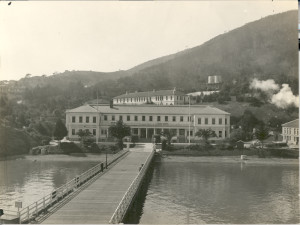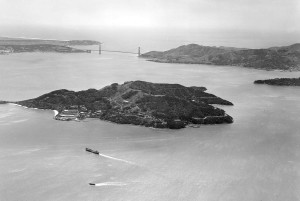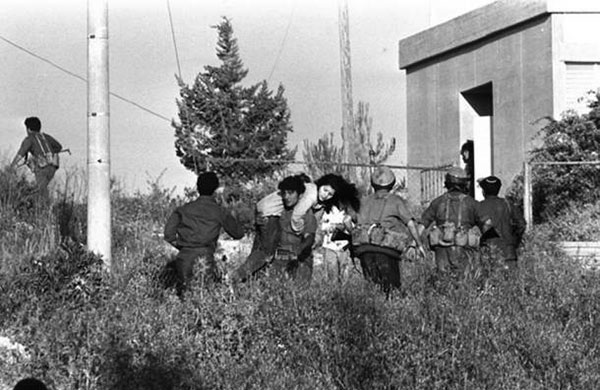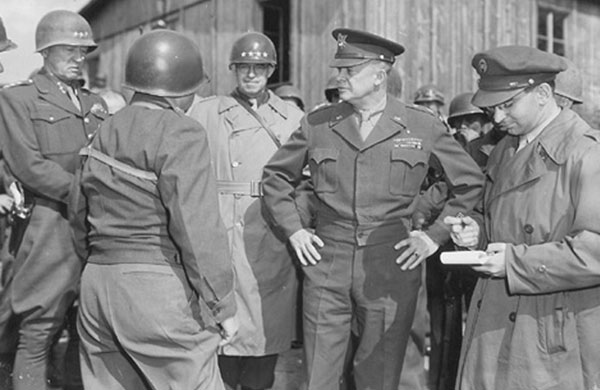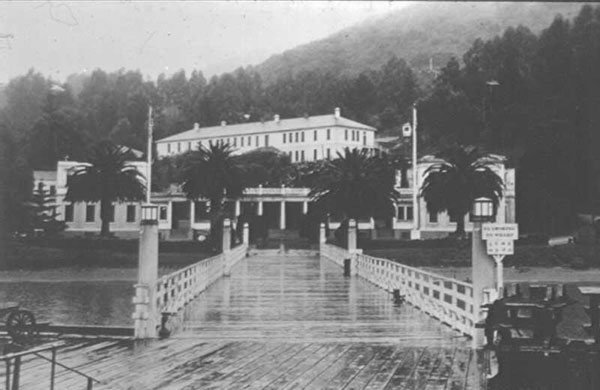
1910: The Angel Island Immigration Station opened today.
Prior to the opening of the Immigration Station, immigrants landed directly in San Francisco.
Jews immigrated through Angel Island primarily in two waves:
in the 1920s from Russia to escape the Bolshevik revolution,
and between 1938 and 1940, when German and Austrian Jews crossed Asia to flee the Nazis.
In some ways, Angel Island was the Ellis Island of the West.
But because of the politics and laws of its time, unlike Ellis Island,
many immigrants were detained on Angel Island for weeks or months at a time,
particularly Chinese and other Asian immigrants.
According to Judy Yung, a retired professor at U.C. Santa Cruz
and co-author of a new book about Angel Island’s history, Jewish immigrants had it better.
The average stay for Russians and Jews on Angel Island
was two to three days, and less than 2 percent were deported.
“Overall, the Russian and Jewish experiences on Angel Island were very similar
if not better than those of their counterparts on Ellis Island,
where their rejection rate was almost twice as high,” she writes.
“For the overwhelming majority who were coming to escape religious or political persecution,
Angel Island was truly a gateway to the promised land of freedom and opportunity.”
However, it wasn’t an easy gateway to pass through. Many immigrants — including Jews — were detained.
In some instances, representatives from Jewish and Hebrew benevolent societies
felt compelled to come to Angel Island to testify on behalf of Jewish detainees.
In 1915, for example, one such representative spoke to immigration officials,
telling them that “we always take steps to see that Jewish boys obtain work and do not become beggars.”
After this, officials released eight Jewish detainees, according to Yung’s book.
The Hebrew Immigrant Aid Society also stepped in to help,
opening a Pacific Coast branch in San Francisco in May 1915 mainly to advocate
for the increased number of Jews coming through Angel Island.
In 1916, for example, when 17 Jews refused to eat the food served to them in the Angel Island
dining hall during Passover, HIAS provided the immigrants with matzah
and kosher-for-Passover food they could eat in their rooms.
And in 1933, when a 54-year-old widower traveling with his two sons was detained
on the island because officials thought he was “emaciated and frail looking,”
HIAS offered a hand. HIAS helped round up $1,000 from other family members,
and the father, who spent two months on Angel Island, was finally released.
In another instance, a shoe-store owner from Vienna and his wife were held
overnight because they were suspected of being an LPC, a “likely public charge,”
meaning they would need government support to get by.
They had come from Shanghai with just $22 to their name.
But because they had the foresight to leave Germany with two fur coats worth over $2,000 —
the Nazis allowed them to take goods but not money —
they were able to convince the officials of their financial stability.
“I was really struck by the resourcefulness of the Jewish immigrants,”
Yung said during a phone interview.

